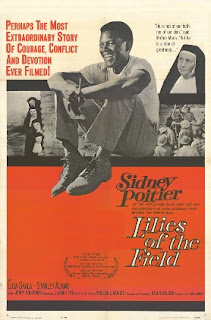Aprender, enseñar y practicar buenos hábitos en gestión de proyectos
27 de octubre de 2013
Tools for Volunteering a Project
On September the 30th it was the project kickoff for a volunteering project aimed to translate into Spanish the book: A Pocket Companion to PMI's PMBOK Guide, authors Paul Snijders, Thomas Wuttke, Anton Zandhuis, edited at Van Haren Publishing. On this project, sponsored by PMI Netherlands, there is a volunteer team with members from several PMI chapters (Madrid, Barcelona, Valencia and Buenos Aires). We are 8 volunteers working as a virtual team. I'm honored to manage this project.
The main challenge is to get a high quality translation before the due date in January, so it is neccessary to keep stuck to a realistic plan. Being this a volunteering project, it is equally important to optimize the effort needed from volunteers, since everybody have many important things to do, apart from this project.
After 3 work weeks and 2 follow up meetings, we already have the feeling of a high performing team, and I believe this could have not been possible without the proper tools. In this project we are using 4 tools: Google Drive for document management, GoToMeeting for virtual meetings, Asana for task management and collaboration and TALAIA OpenPPM for project management. Following there is a short description on how we are using them, with a short video (in Spanish).
20 de octubre de 2013
Herramientas para un Proyecto de Voluntariado
En septiembre de 2013 se lanzó un proyecto de voluntariado con el objetivo de traducir al español el libro: A Pocket Companion to PMI's PMBOK Guide, autores Paul Snijders, Thomas Wuttke, Anton Zandhuis, editado por Van Haren Publishing. En este proyecto, patrocinado por PMI Holanda, participamos los capítulos de Madrid, Barcelona, Valencia y Buenos Aires. En total somos 8 voluntarios trabajando en un equipo virtual. Yo tengo el privilegio de dirigir el proyecto.
El reto principal es lograr una traducción de alta calidad antes de la fecha de publicación en enero, por lo que es necesario ceñirse a una planificación realista. No menos importante al tratarse de un proyecto de voluntariado es optimizar el tiempo debemos dedicar a este proyecto, pues todos tenemos otras cosas importantes que hacer.
Después de 3 semanas de trabajo y 2 reuniones de seguimiento, ya tenemos la sensación de equipo a pleno rendimiento, y creo que esto no lo habríamos conseguido sin las herramientas adecuadas. En este proyecto usamos 4 herramientas: Google Drive para gestión documental, GoToMeeting para reuniones virtuales, Asana para gestión de tareas y colaboración y TALAIA OpenPPM para gestión de proyectos. A continuación voy a describir brevemente cómo las usamos.
13 de octubre de 2013
Visualize Destiny and Path
Following there are some lines that flows naturally when we integrate in our character habit 2.1) I Visualize Destiny and Path:
- “Affected users will need this training before week 15. Training feedback will be taken into account in change management activities.”
- “First development iteration will solve all architectural technical issues throughout a prototype. Second iteration will release all functionality for accounts receivable, which is the most critical. Third iteration will cover the remaining functionality.”
- “Testing separate team will be needed as of 5 FTE in July, 8 FTE in September and 10 FTE in January.”
- “We should negotiate the licensing terms of the project product. Our company could extend this business line with this.”
Labels:
English,
Experiencia,
Hábito 2,
Persona completa,
Profesión PM,
Victoria privada
6 de octubre de 2013
Project Managers enjoy farewells

We Project Managers are distinguished from Service Managers —a.k.a. Operation Managers— for mainly one reason: The thing which is managed, that is, the project, is coming to an end, eventually. From the very beginning, projects are born with this in mind: they are to conclude no later than a due date. Besides the timing goal, there are another goals not least important, of course, such as concluding on cost, delivering certain features, making the product to be perceived as “good” from the customer perspective, etc. Nonetheless, the most distinctive goal is that a projects start and finish.
One habit Project Managers are supposed to master is “start with the end in mind.” From day one the Project Manager has to visualize the destiny and the path. We strive to imagine how that final situationwill look like —being stakeholders' expectations met or exceeded. We want to do our best to get into that point. Any Effective Project Manager should admit that the project he is starting right now is “a formidable mess” making many people disturbed and upset because they will have to change. Each project suffer many problems, conflicts, unexpected crisis, etc. Each project success depends on team performance, but team members usually have not even met before. Worthy projects are subject to a lot of risk, and many of them depends very much on third parties' performance —and contract issues are often taken to litigation.
Since all of this “mess” has to be managed by the Project Manager, is perfectly normal he starts imagining that last day in which the final closure happens and everything is over finally: He has called a meeting with the sponsor and a representative group of stakeholders. He has elaborated a PowerPoint presentation and leant it by heart. He has dressed his best suit. He has prepared the room, the projector, printed handouts, etc. The stakeholders are sitting. It's time. Finally he is starting this well known ceremony called “Presentation of Project Results”. But this presentation is titled other way, in his mind: “Goodbye, I'm leaving.”

I think this way of thinking have to have some psychological roots. Doesn't it sound a little bit alienating that we want to kill what we have created with great effort and illusion: “our project”? However, this is precisely what we are expected to do: we start, we execute and we close projects. Once you have lived throught this for many times, you get used to closing, which is the toughest part, for sure.
Recently I've watched the film: Lilies of the Filed, starring Sidney Poitier. The script resembles very much to a project —“Build a Chapel”— but the most inspiring part comes at the end: to my understanding, any project should be closed just like that.
What follows is a brief analysis of some key points of what I think is a good closing to a project. Important warning/disclaimer: I'm going to spoil the final scene of this masterpiece film, so if you have not seen it yet, please don't keep reading ;-)

I think this way of thinking have to have some psychological roots. Doesn't it sound a little bit alienating that we want to kill what we have created with great effort and illusion: “our project”? However, this is precisely what we are expected to do: we start, we execute and we close projects. Once you have lived throught this for many times, you get used to closing, which is the toughest part, for sure.
Recently I've watched the film: Lilies of the Filed, starring Sidney Poitier. The script resembles very much to a project —“Build a Chapel”— but the most inspiring part comes at the end: to my understanding, any project should be closed just like that.
What follows is a brief analysis of some key points of what I think is a good closing to a project. Important warning/disclaimer: I'm going to spoil the final scene of this masterpiece film, so if you have not seen it yet, please don't keep reading ;-)
Labels:
English,
Ética del carácter,
Experiencia,
Hábito 2,
Hábito 7,
PMI
Suscribirse a:
Comentarios (Atom)

